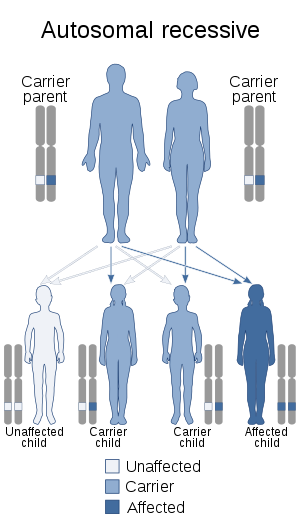UV-sensitive syndrome
UV-sensitive syndrome is a cutaneous condition inherited in an autosomal recessive fashion, characterized by photosensitivity and solar lentigines.[1] Recent research identified that mutations of the KIAA1530 (UVSSA) gene as cause for the development of UV-sensitive syndrome.[2] Furthermore, this protein was identified as a new player in the Transcription-coupled repair (TC-NER).[2]
| UV-sensitive syndrome | |
|---|---|
| Other names | UVSS |
 | |
| This condition is inherited in an autosomal recessive manner. | |
| Specialty | Dermatology |
See also
- Solar urticaria
- List of cutaneous conditions
- Cockayne syndrome
- Xeroderma pigmentosum
- Nucleotide excision repair
References
- Rapini, Ronald P.; Bolognia, Jean L.; Jorizzo, Joseph L. (2007). Dermatology: 2-Volume Set. St. Louis: Mosby. p. 1342. ISBN 1-4160-2999-0.
- Schwertman P., Marteijn JA.; Lagarou A; Dekkers DH; Raams A; van der Hoek AC; Laffeber C; Hoeijmakers JH; Demmers JA; Fousteri M; Vermeulen W (May 2012). "UV-sensitive syndrome protein UVSSA recruits USP7 to regulate transcription-coupled repair". Nat. Genet. 44 (5): 598–602. doi:10.1038/ng.2230. PMID 22466611.
Further reading
- "UV sensitive syndrome | Genetic and Rare Diseases Information Center (GARD) – an NCATS Program". rarediseases.info.nih.gov. Retrieved 6 November 2018.
This article is issued from Wikipedia. The text is licensed under Creative Commons - Attribution - Sharealike. Additional terms may apply for the media files.